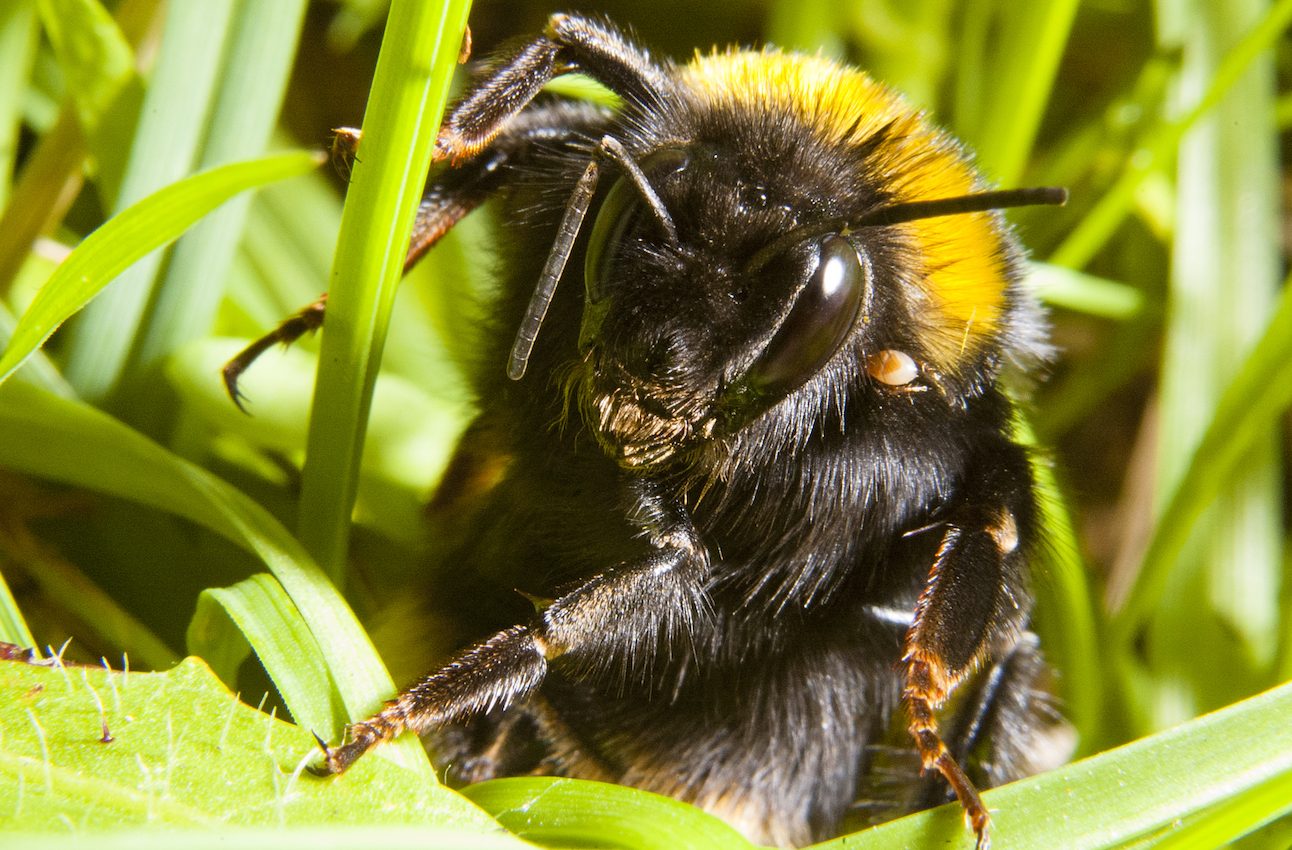
Queen bumblebees spend most of their time resting after hibernation
A new study from Queen Mary University of London has uncovered a previously unknown behavior among queen bumblebees. The researchers found that after hibernating in the winter, queen bumblebees spend most of their time resting under dead leaves and grass.
The findings suggest that the queen bumblebees combine long rests with short flights directly after hibernation, which explains how they end up far away from their nest.
“We wanted to see what queens actually do right after they emerge. By combining state-of-the-art tracking technology with wild bee observations, we were able to uncover a never before seen behavior of queen bumblebees,” explained co-lead author Dr. James Makinson.
The researchers monitored queen bees that had just emerged from artificially-induced hibernation. They placed small antenna on their backs and used radar to track them across an outdoor site.
The study revealed that the queen bumblebees were spending most of their time resting. They would generally spend 10 to 20 minutes on the ground before making short, random flights that lasted only 10 to 20 seconds.
“Our study suggests that a few weeks of this type of behavior would carry queen bees several kilometers away from their hibernation site and might explain how queens disperse from the nest in which they were born to the place they choose to found a new colony,” said co-lead author Dr. Joe Woodgate.
“Better understanding the behavior of queens during this crucial period of their lives can suggest practices to improve their chances of successfully founding new colonies and help their survival,” added Dr. Makinson.
“Our findings suggest that creating pollinator friendly corridors between conserved landscape patches would be helpful. It would also be beneficial to plant pollinator friendly flowers and trees all year round, giving bumblebee queens ample access to food during their early spring emergence. And leaving vegetation, such as leaf litter and long grass, undisturbed until late in the spring would give queen bumblebees safe places to rest.”
The study is published in the journal Scientific Reports.
—
By Chrissy Sexton, Earth.com Staff Writer
Image Credit: Joe Woodgate













